by Craig Brelsford
Founder, shanghaibirding.com
“I have thought a lot about yesterday and can honestly say, it must be one of my all-time ornithological highlights.”
— Dr. Mike May, message to Craig Brelsford
Those are the words not of a new birder, but of a highly experienced visiting birder with thousands of birds on his life list who resides in bird-rich Extremadura, Spain.
Birding Pudong’s Cape Nanhui at the height of the spring migration left Mike May open-mouthed. Should anyone be surprised? The most southeasterly point of Shanghai is a world-class birding site.
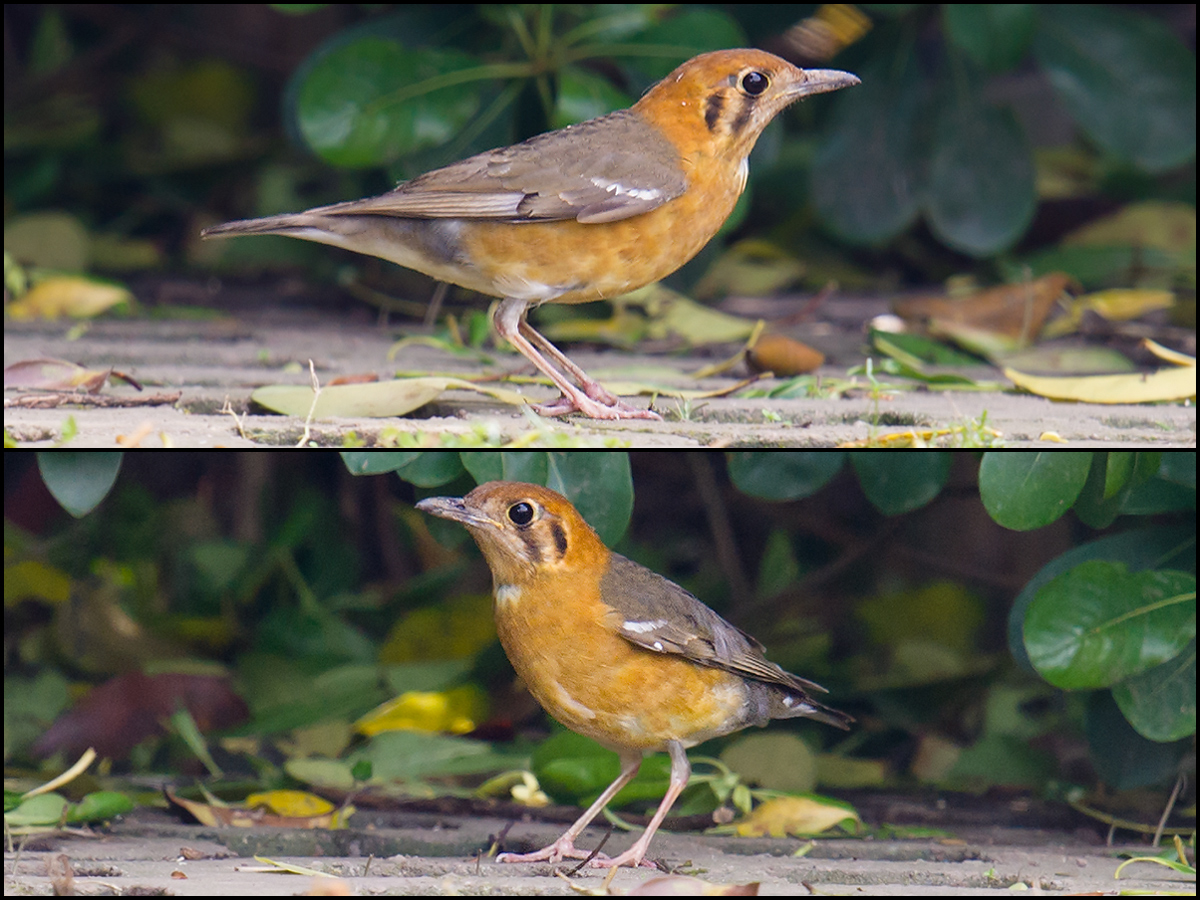
Mike’s 92-species day with Beijing-based Swedish birder Jan-Erik Nilsén and me included ultra-rarity Orange-headed Thrush as well as Pallas’s Grasshopper Warbler and Lanceolated Warbler. A pair of sub-adult Black-faced Spoonbill were getting by on the ever-shrinking pools at the beleaguered site.
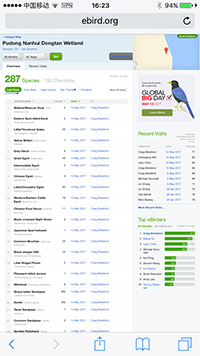
These records brought the all-time list for Cape Nanhui to 288 species, according to eBird—making Cape Nanhui the second-hottest birding hot spot in China.
Let me say that again: Of the thousands of birding spots in this vast, mega-diverse nation, the most southeasterly point of Pudong and Shanghai is second only to Baihualing in Yunnan in species noted.
Sound unbelievable? Let me say something even more unbelievable: Not only is this rich spot completely unprotected, with not even a square meter preserved in any legal way; but it is, to the contrary, being actively destroyed, even as I tap out these words.
The backdrop to the work of Mike, Jan-Erik, and me was fleets of bulldozers and backhoes, busy throughout the weekend. They clattered and clanged, and the pumps transferring water into the newly dug canals whirred and chugged.
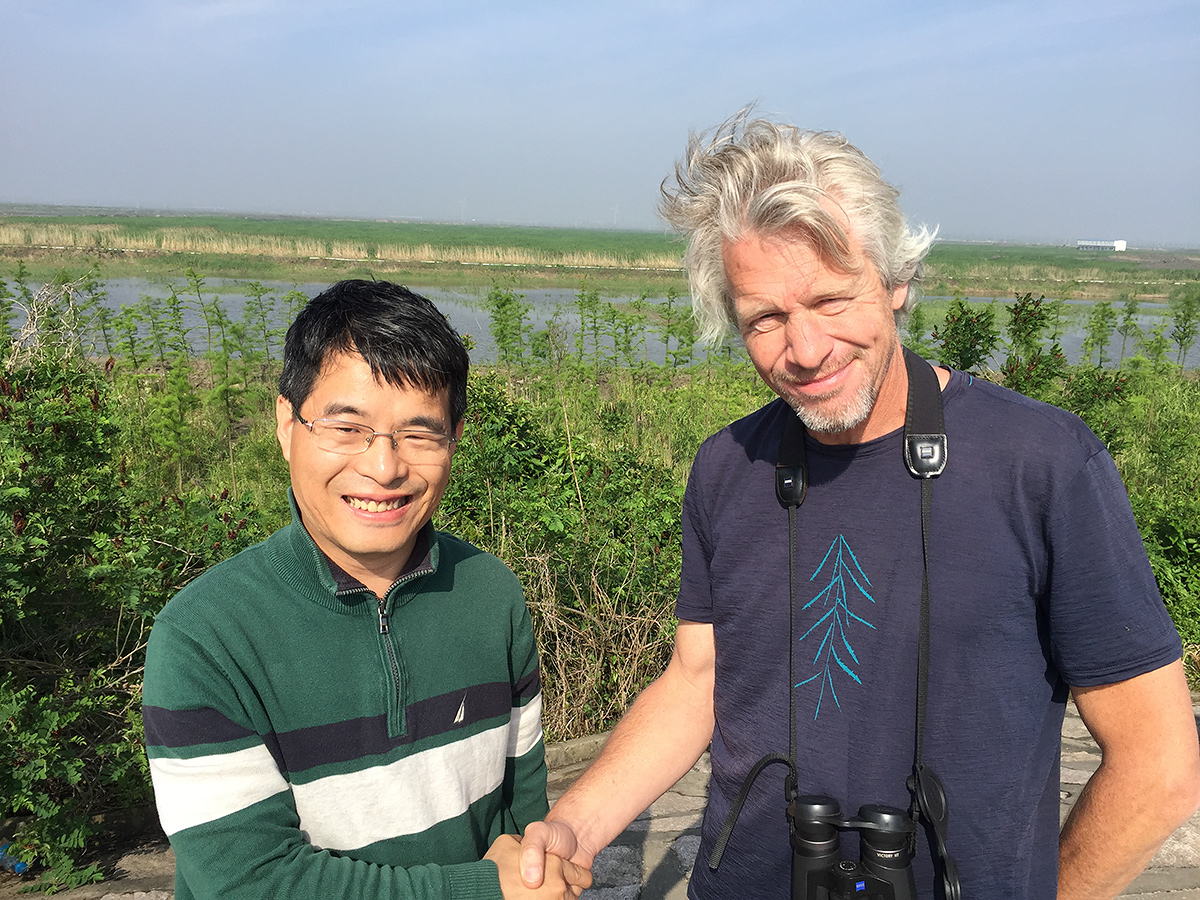
The pace of transformation is faster than ever now.
“Nanhui is gone,” my partners and I said.
A major ecological area, a place combining ease of access to millions of residents of Earth’s largest city and a favorable position on Earth’s greatest migratory flyway, is being utterly transformed.
While the Cape Nanhui that I have long known falls, huge tracts of adjacent tidal mudflat are being reclaimed, adding dozens of square kilometers to the land area of Cape Nanhui. Birding there in theory could have a future. A Cape Nanhui Nature Reserve could be set up in the new area.
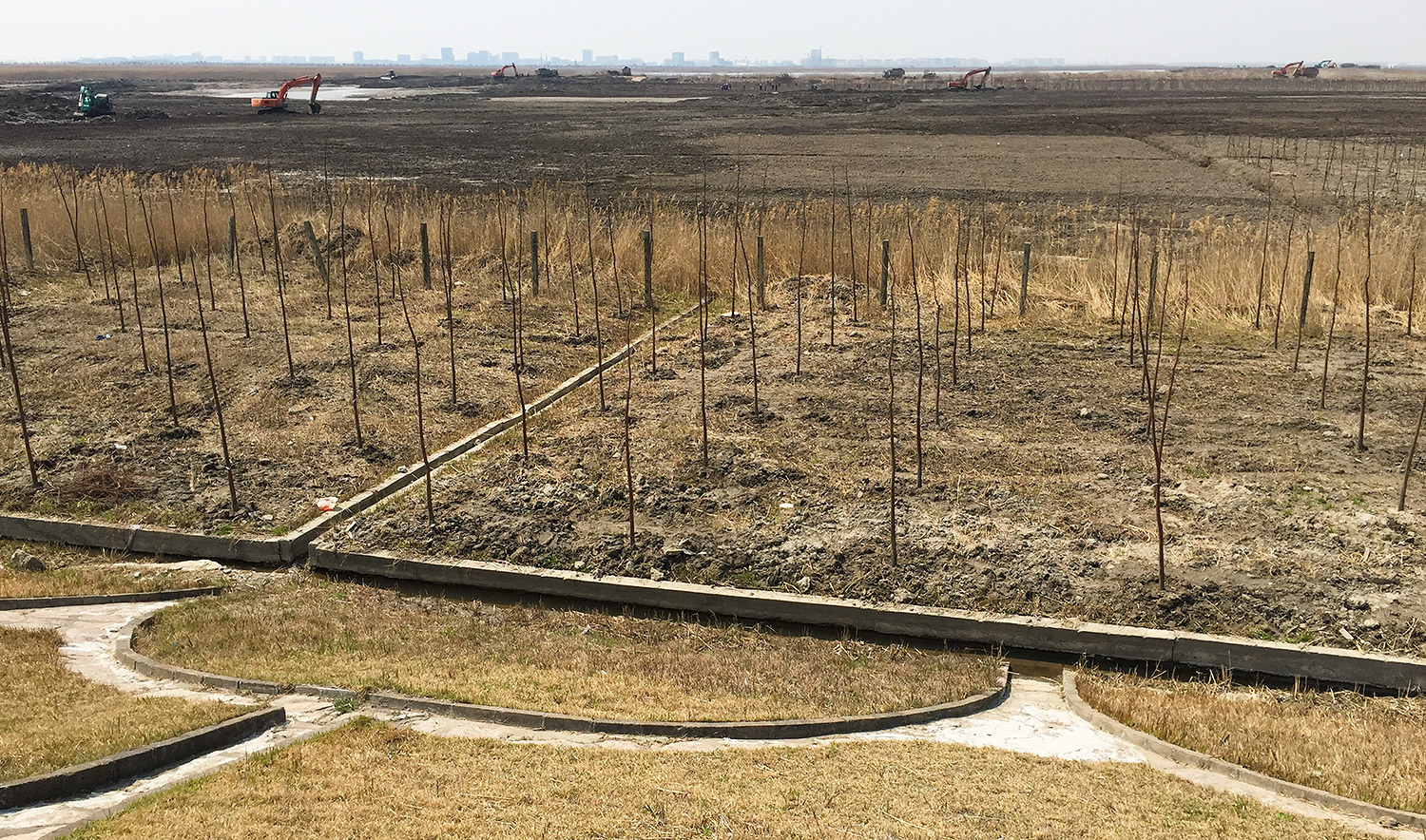
But even as the Cape Nanhui we know falls, no one, to my knowledge, has hastened to reassure conservationists that areas in the newly reclaimed land will be set aside for birds.
In the city-province of Shanghai, which is the size of the U.S. state of Delaware, a few places have indeed been set aside, among them Chongming Dongtan. But those reserves are small, on remote islands far from mainland Shanghai, and practically unreachable by the millions of middle-class Shanghainese who lack a car.
Cape Nanhui, by contrast, is easily reachable from the city. And it is the one place where masses of bird lovers can conveniently get a taste of the grand spectacle that is spring migration along the east coast of the Eurasian supercontinent.
That opportunity is being taken away, not only from the birders alive today, but also from the birders of the future.
THE THRILL OF CAPE NANHUI IN MAY
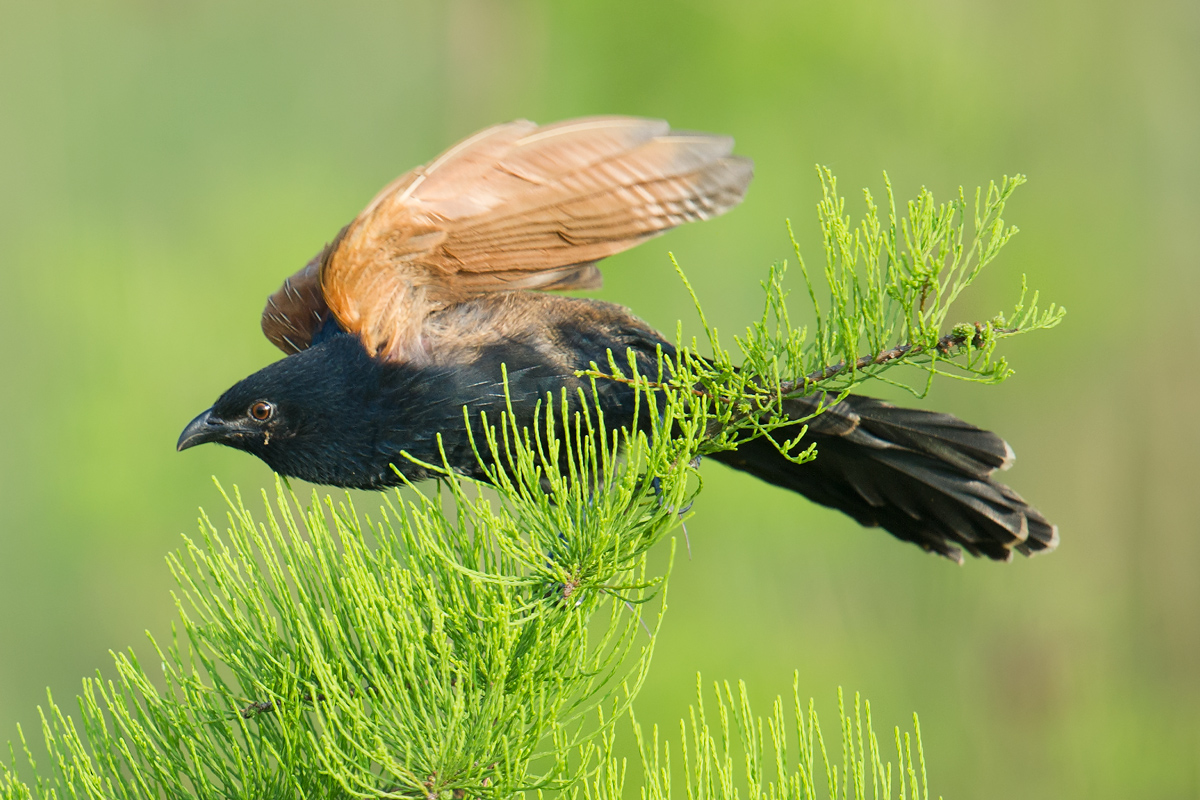
Our agony over the fate of Nanhui was tempered by the joy of birding. Orange-headed Thrush showed up Saturday at the Magic Parking Lot (30.884898, 121.968229). With the two vertical bars on its face, our specimen was either of race melli (breeds Guangdong, etc.) or courtoisi (Anhui).
On Sunday the Magic Parking Lot delivered singing Grey-crowned Warbler Seicercus tephrocephalus, and in Microforest 2 (30.926013, 121.970705) an appearance was made by Alström’s Warbler S. soror. Neither breeds in the region; both are very rare vagrants to Shanghai.
Iron Track (31.003613, 121.907883) gave us singing Yellow-breasted Bunting in full breeding finery and singing Pallas’s Grasshopper Warbler. I captured the latter’s song, rarely heard in Shanghai.
Pallas’s Grasshopper Warbler Helopsaltes certhiola, 13 May, Iron Track (31.003613, 121.907883) (00:13; 2.1 MB)
The Marshy Agricultural Land (30.850707, 121.863662) near Eiffel Tower was highly productive, yielding Lanceolated Warbler, Forest Wagtail, and Striated Heron.
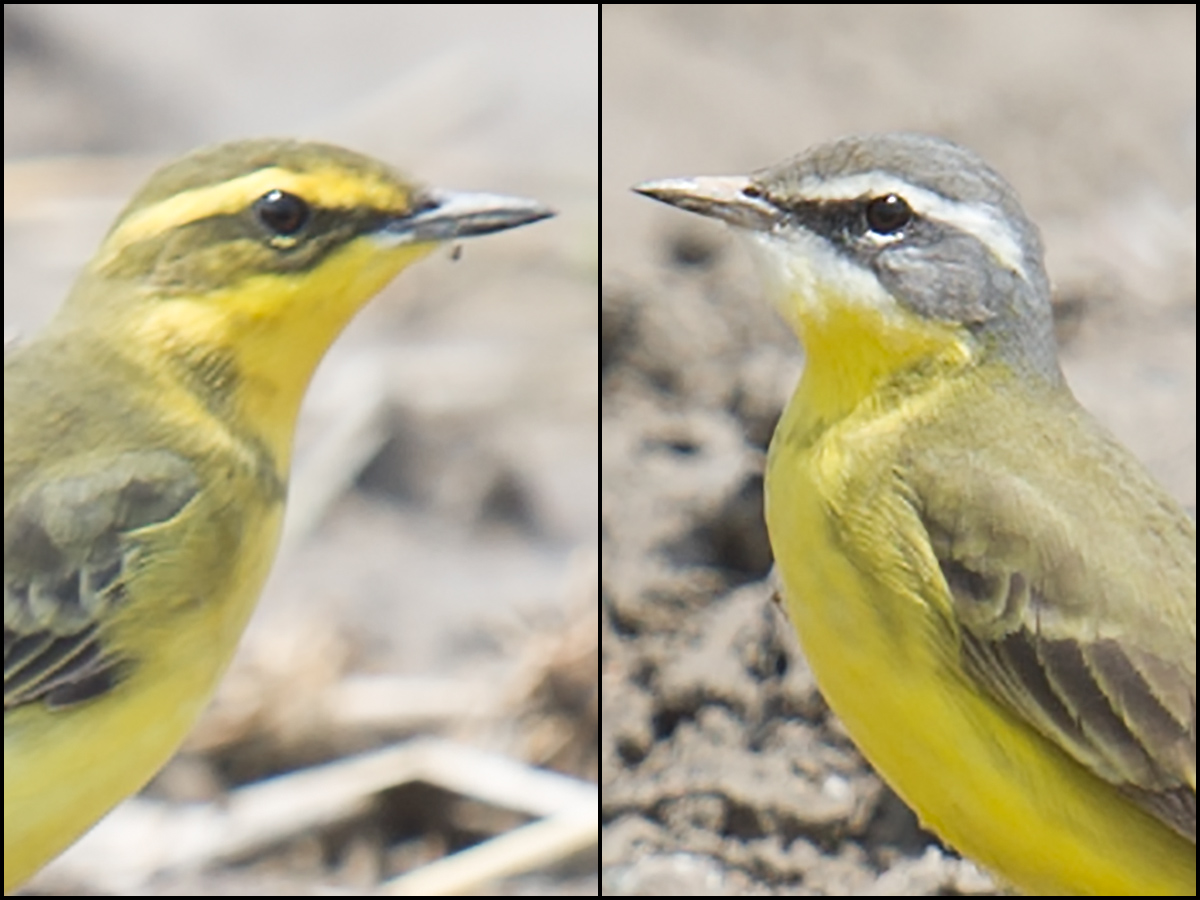
Other highlights from Saturday along the 30-km stretch of coastline:
Yellow Bittern Ixobrychus sinensis 2
Chinese Egret Egretta eulophotes 14
Pacific Golden Plover Pluvialis fulva 1
Pheasant-tailed Jacana Hydrophasianus chirurgus 1
Black-tailed Godwit Limosa limosa 17
Grey-tailed Tattler Tringa brevipes 2
White-winged Tern Chlidonias leucopterus 260
Lesser Coucal Centropus bengalensis 1
Common Cuckoo Cuculus canorus 12 singing
Tiger Shrike Lanius tigrinus 4
Sand Martin Riparia riparia ca. 300
Collared Finchbill Spizixos semitorques 2
Arctic Warbler Phylloscopus borealis 5 singing
Thick-billed Warbler Arundinax aedon 1
Marsh Grassbird Helopsaltes pryeri 2 singing
Forest Wagtail Dendronanthus indicus 1
Complete checklist here.
Sunday saw Jan-Erik and me note 78 species.
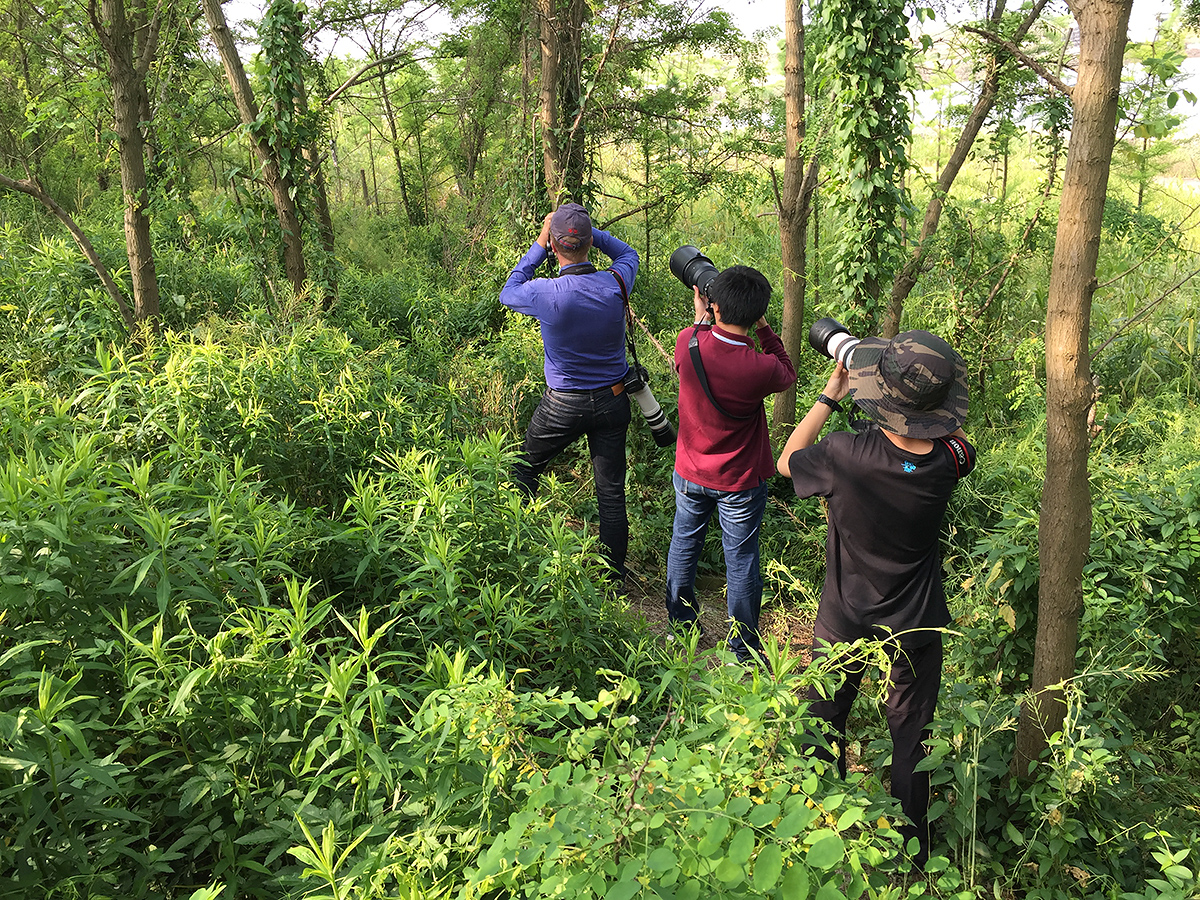
Highlights:
Japanese Sparrowhawk Accipiter gularis 1
Sharp-tailed Sandpiper Calidris acuminata 50
Dunlin C. alpina 350
Oriental Pratincole Glareola maldivarum 3
Little Tern Sternula albifrons 5
Hair-crested Drongo Dicrurus hottentottus 8
Dusky Warbler Phylloscopus fuscatus 1
Taiga Flycatcher Ficedula albicilla 1
Pechora Pipit Anthus gustavi 17 singing
Complete checklist here.
Featured image: Visiting British birder Mike May scans for birds at Cape Nanhui. An experienced birder, May was nonetheless overwhelmed by the variety of birds at Cape Nanhui at the height of spring migration. May described his day at Cape Nanhui as “one of my all-time ornithological highlights.” (Craig Brelsford)

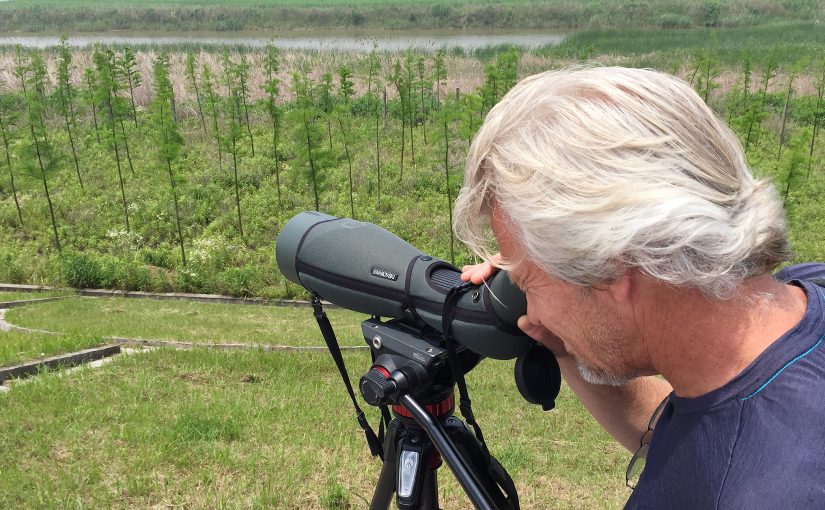
Xie xie ni Thank you so much for sharing.
– I also have a P900S, my first P900 (2015 vintage) was drowned in South African saltwater lagoon when the bottom of the lagoon gave way. My great insurance company (IF – Finland) was very considerate and came to the rescue. Nikon assured me that the camera was not worth repairing (I still have the P900 and willing to part with it–for a good cause). The new camera–identical except for the designation “S”–was purchased a few weeks ago at the Nikon shop in Wangfujing, Beijing, PRC.
For my needs, the P900/P900S is close to perfect. Though I was a little disappointed that there have been no hardware upgrades since the launch, while rumors abound of the next generation (100 + x optical zoom, etc.) sometime in the future.
Of course I admire Mike May’s camera, his fortitude, skills, endurance and professional approach, but I do not really happy where I am and do not want to intrude into his realm.
By the way, I tend to continually test the capabilities of my P900S, close to or slightly beyond the extremes of its amazing range of capabilities and find it wonderfully forgiving of my follies.
I do not have a website but happy to share photos.
fred
Hi Craig/Elaine,
Thanks for your dedication to operating your high-quality website for a number of years. When I first visited Shanghai 3 years ago, Shanghaibirding.com gave me all the detailed info I needed to maximise my birding efforts. Two weeks ago, I returned to Shanghai again and even though the driver for taking the trip was work-related, I managed to get a few days off for birding. I visited the same 3 places as last time, only this time in the middle of the best migration season (April 27 – May 3rd). I went to Century Park, Chongming Island and Cape Nanhui, and what a rush on Cape Nanhui this time! I ended up spending 3 full days out there scanning the microforests and the surrounding areas.
I consider myself a keen, Norwegian birder for 3 decades. For a western European birder, a selection of Siberian and eastern Asian species is a very rare treat, and finding this area teeming with “snacks” was truly awesome. I’ll register on ebird, but for now let me say that great photos of Siberian Thrush and Siberian Blue Robin (both stunning males) was perhaps the very best. Add to this a selection of buntings, leaf-warblers and other thrushes and you have a recipe for success.
Hi Jon, You communicate well the excitement of your trip to Cape Nanhui during the height of migration season. I also appreciate your Scandinavian perspective. I hear echoes of your words often among Swedish birders, fascinated by the Siberian and East Asian birds of coastal China during the migrations. In your opinion, was going to Chongming worth the effort, or would more time at Cape Nanhui have been just as good or better?
For me, going to Chongming requires a car and an English-speaking driver for the full day, as I don’t see myself trying to find my way with bus or communicating with a non-english speaking taxi driver (I don’t speak mandarin at all). The distances at Chongming in my opinion adds to the necessity of having a car available. So a colleague from work offered to take me for the full day which was great.
It appeared as though access to certain areas “out in the reeds” have been closed to the public since last time, but that’s maybe just me failing to remember details from 3 years ago?
Having said that, I think Cape Nanhui is the better option for some key reasons:
The ease of getting there. Line 16 and then a taxi to either the Hotel or to microforest #8 is cheap and something I can do by myself, without depending on others.
The size of the area relative to Chongming makes birding easy. Cape Nanhui is easily covered by a day’s walk. At Chongming I feel I could walk “forever” without visiting the same place twice.
….and lastly – the birds. Except for a few yellow-browed buntings, Cape Nanhui delivered every single species as did Chongming … and many more.
So replacing a day at Chongming with a day at Cape Nanhui is for me an obvious choice, and I actually ended up going there 3 consecutive days.
Hi Jon, Your response is exactly what I expected and is further proof of the inadequacy of the system of nature reserves in Shanghai. I have long argued that Shanghai both protects too little of its precious coastline and locks away from the public the bit of coastline that it manages to protect. It’s a deplorable situation and all but guarantees that foreigners and the people of Shanghai have little to no opportunity to love and cherish the fascinating coast of the city-province. Cape Nanhui has been the one place that has been both accessible and of excellent quality, and the most southeasterly point of Shanghai still delivers, but it is completely unprotected. I have called on Elon Musk and Tesla to lend a hand toward protecting Cape Nanhui: https://www.shanghaibirding.com/musk/ Maybe you could describe in a comment to that post the ease of birding Nanhui as contrasted with the difficulty of birding Chongming. You would be doing lovers of Cape Nanhui a great service. Thanks! Craig